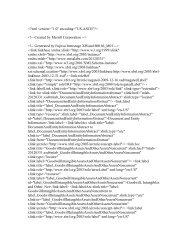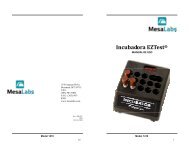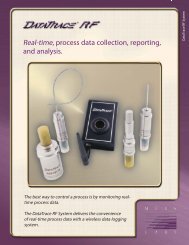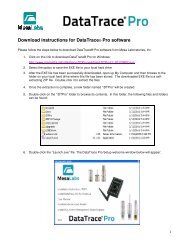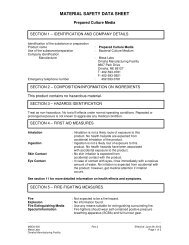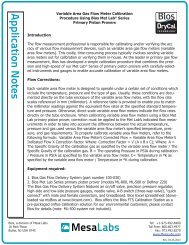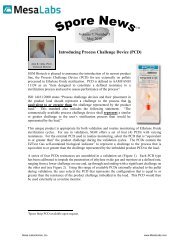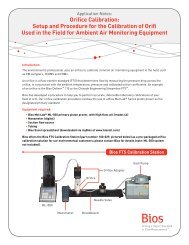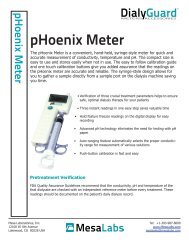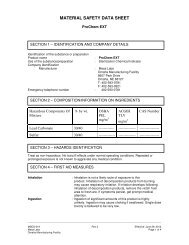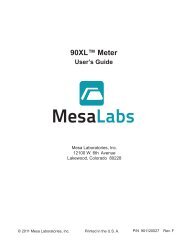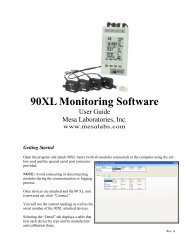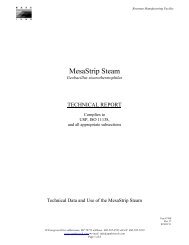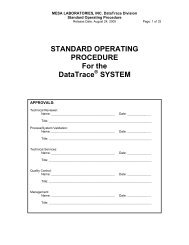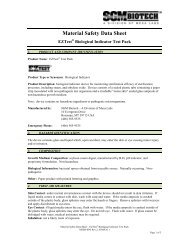Monitoring Bio/Med Waste Bags with Spore Strips as ... - Mesa Labs
Monitoring Bio/Med Waste Bags with Spore Strips as ... - Mesa Labs
Monitoring Bio/Med Waste Bags with Spore Strips as ... - Mesa Labs
Create successful ePaper yourself
Turn your PDF publications into a flip-book with our unique Google optimized e-Paper software.
our confidence level for sterility <strong>as</strong>surance h<strong>as</strong> been greatly lowered. Using an improper<br />
biological indicator for a specific cycle type is more deleterious than using no BI at all.<br />
Over the p<strong>as</strong>t 15 years I have come into contact <strong>with</strong> numerous w<strong>as</strong>te bag steam cycles<br />
where spore lethality just did not occur. Some were due to inadequate exposure time but<br />
the majority were due to inadequate air removal and thus poor steam penetration. Some<br />
cycles just did not include a Prevac ph<strong>as</strong>e and thus steam penetration w<strong>as</strong> extremely<br />
difficult or impossible to obtain and some were mechanical vacuum failures. Time and<br />
temperature recordings were fine but the prevac w<strong>as</strong> missing and thermocouples located<br />
in the w<strong>as</strong>tebag were me<strong>as</strong>uring dry heat rather than moist heat <strong>with</strong>in the bag’s contents.<br />
If spore strips were used and if they were in contact <strong>with</strong> bactericidal or disinfectants in a<br />
very localized area in such a situation where adequate steam penetration did not occur<br />
and the strip should have survived, we could possibly have a failed cycle yet the spore<br />
strips would indicate adequate cycle parameters were met and a failed cycle not detected.<br />
Prevac cycles should always be used when autoclaving biow<strong>as</strong>te/RMW bags. The prevac<br />
adds additional confidence that heat penetration and air removal <strong>with</strong>in the bag is being<br />
accomplished. One could use a wireless<br />
temperature data logger located near the w<strong>as</strong>te<br />
bag’s bottom area to check for temperature<br />
penetration. This simple to use data logger will<br />
record the temperature obtained by the lower<br />
portion of the bag contents during the entire cycle<br />
time. At the cycle end, the Logger is downloaded<br />
to a PC and the cycle temperature profile is<br />
observed.<br />
Photo #3: Temperature Data Loggers<br />
Photo #4 shows what an extreme situation could look like if the strips were allowed to<br />
come in contact <strong>with</strong> w<strong>as</strong>te bag contents. The spore strips could very likely be<br />
compromised and not provide valid testing or monitoring results. Even extreme,<br />
moisture saturated spore strips at a cycle’s end should be suspect of being compromised.<br />
<strong>Spore</strong> strips are not manufactured for or intended to be placed <strong>with</strong>in liquid loads. The<br />
spore strip envelope made from gl<strong>as</strong>sine paper h<strong>as</strong> uniformly small size porosity when in<br />
a dry condition. Soaking the gl<strong>as</strong>sine <strong>with</strong> moisture modifies the porosity. Using them in<br />
liquid-type loads is contrary to the spore strip’s intended use.<br />
Photo #4: <strong>Spore</strong> strips covered in w<strong>as</strong>te bag debris<br />
4



